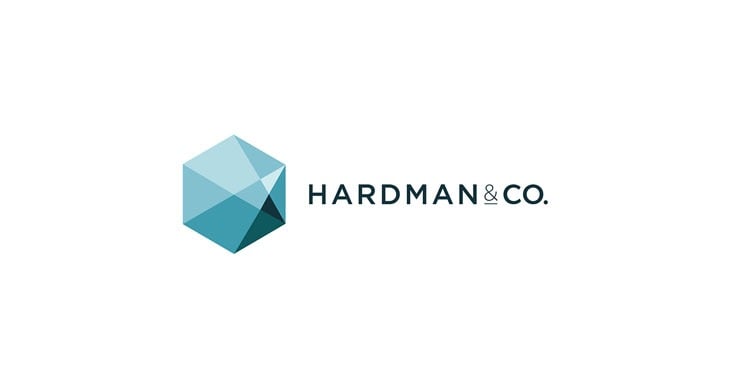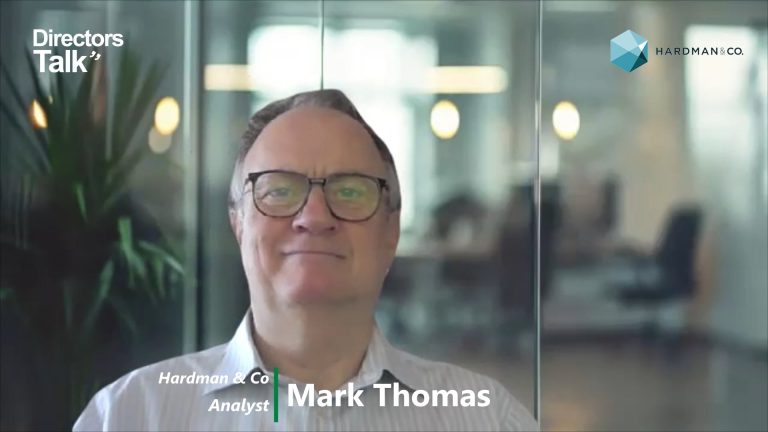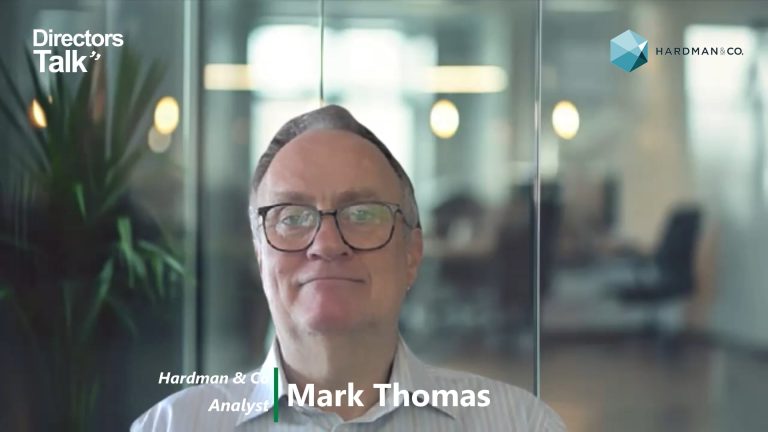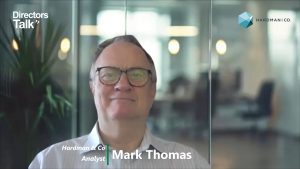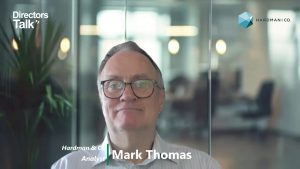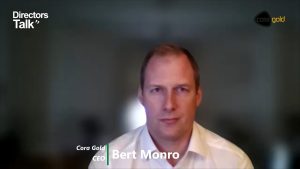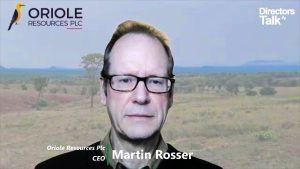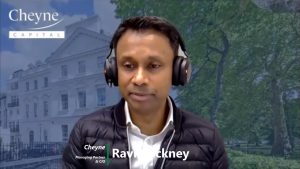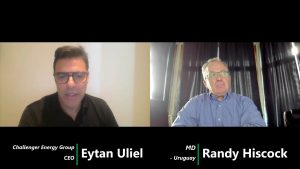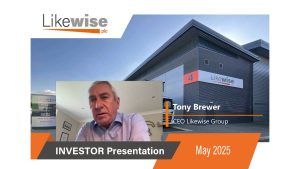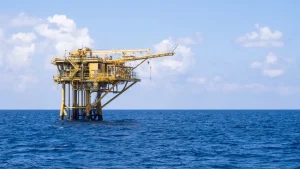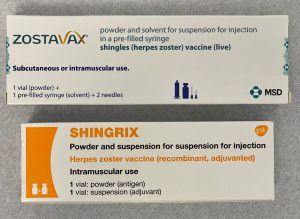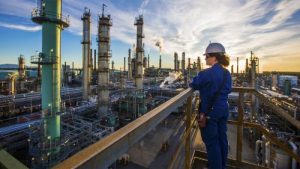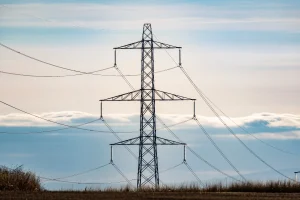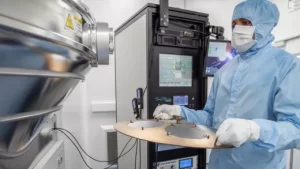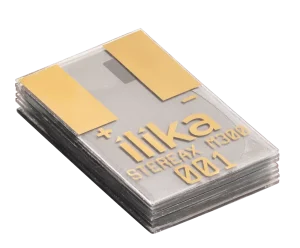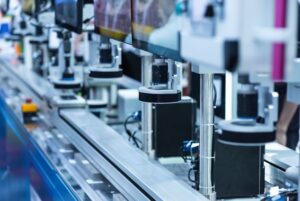Surface Transforms plc (LON:SCE) is the topic of conversation when Hardman and Co’s Analyst Mike Foster caught up with DirectorsTalk for an exclusive interview.
Q1: Can you summarise the latest Hardman & Co research document published a few days ago on the back of the company interims?
A1: We’ve published a research note following interim results to June 2022. We have made a big upgrade to current orders, now £190m, because of another new customer win.We have initiated a number for the pipeline, that is the further order pipeline. And, although that number is big – gross profits just in that additional forward order book are twice the market cap – there is something we want to show, which is more important than just the size; it’s the detail.
We see a fascinating big-picture for Surface Transforms in a market growing ten-fold, but we are also impressed by the detail shown by the company. Details provide great confidence in the tangible make-up of the exciting prospects. It’s detail on who is in the order book, when the off take is, how manufacturing is working, down to details on each furnace. It’s on R&D and customer servicing overhead and recruitment.
So that’s the prospects, but, as to the here and now, well, we have an IP-led super growth company, which has now broken through to making profits. Our note quantifies this growth ramp up in 1) sales up 140% 2) order book quadrupled in 2 years and 3) installed working capacity of £20m annual sales now really robust, working well, expanding rapidly within months to £50m, with a great team in place. There are 10 live contracts with 6 customers.
Q2: You said something about just the size being maybe less important than the detail?
A2: We’ve always been impressed by the company’s engineering, supply-chain and customer/prospective customer detail. But this financial period we’ve just had to take this detail to a major new level.
As an analyst, the more detail the better and we have substantial publicly announced foundations to build confidence in the path to growth. That’s in OEM customer- by-customer quantified detail and timeline detail, in the working of the factory expansion, again with specific numbers and timelines, and in the delivery of major efficiencies year-by-year, the cost reductions being quantified.
Q3: Can you share some of the details as to why you believe in this company’s future delivery and growth?
A3: We’re going to talk about the order book – now £190m, up from £50m two years ago – and the new thing, which is an order book pipeline being quantified. We talk about manufacturing and customer service later. Of course, this is all founded on great IP and major R&D and a market growing ten-fold.
The company doesn’t simply state an order book – which is now £190m, up from £50m 2 years ago and a minimal amount 2 years before that. It gives the size of each customer. The start of production is stated and the shape of delivery year-by-year. We also get detailed insights into the progress with potential customers and now – because the business is on such a wider, larger basis – we have, for the first time, a quantified guidance on the prospective order book. This too is in detail.
The £190m current order book is customer-by-customer. The £400m visible pipeline book is based on specifics. It’s only on known prospective volumes, customer by customer. These are customers with a specific model launch and each with a customer-stated start date. This is only using these specifics mentioned and where exclusivity is demonstrated by the customer and SCE shares model-based engineering activity. This prospective list is now £400m and rising, so the total including the actual order book is £590m. A big jump, but then the actual order book has quadrupled in 2 years. £590m would seem like £350m gross margins and something to mull is that the market capitalisation (with cash on the balance sheet) is around £110m.
By the way, there are lots of quantified details on the manufacturing side of the business delivery.
Q4: The company has been around for many years, but it seems it’s only in the past 4 years we have seen meaningful volume sales growth. Why is it happening now and why the confidence it will keep accelerating?
A4: We’re going to look at how there is a huge economic moat here. Years of time and effort has been invested and it’s all coming back now with this major flood of order news. Capacity of £20m per annum sales has been put in place; all plant for expansion to £50m is ordered, to be commissioned and in during first quarter 2023.
The company has fully commercialised its product, spending years with specific OEM car manufacturers on reliability, safety, environmental and performance trials. Over these recent years, it has opened its first factory, honed its manufacturing process and its supply chain. Once that happened, it all came together.
It has been a very busy six months, with three new contracts in this past first half and now monthly profits achieved. The huge increase in output – first half 2022 sales were much bigger that the whole of 2021 – led, of course, to some challenges and issues on Phase 1 capacity. They were fairly minor challenges – again we are applauding the detailed information provided in the past – and they had been rapidly overcome, crucially with no customer supply issues. There has been investment in a large growing team of engineers, technicians, apprentices and even with PhD level employees. So, not only have we the detailed customer-by-customer order book and the world-beating product, we have that factory capacity. The company has been very specific in updating on the falling costs of installing manufacturing growth.
Q5: You mention efficiency. Can you expand on that?
A5: We referred to manufacturing efficiency. A year ago in a detailed update, they described how the evolution of manufacturing delivery meant a planned rise to £50m capacity could be carried out at significantly lower capital cost. Capital is more efficient and so too are unit costs. Broadly, production costs have already halved.
We now have in early 2023 a step change down in gas and electric costs as second-generation furnaces are installed. By the way, these are priced in US$ and all US$ are hedged; another shared, positive detail. I would like to make a much broader point on efficiency. And that is on efficiencies shared with customers to expand the market. Potentially expand it ten-fold.
Q6: How and why are efficiencies shared with customers and how might that expand the market ten-fold?
A6: Looking ahead, a selling price if it were 30-50% lower is set to lead to explosive growth and that is even before it becomes standard on mid-market cars. In most if not all new automotive component markets, the early market expansion is through premium products whose prices halve and halve again then become standard. This is the journey here. The market is now around £200m a year, globally. In automotive terms, that is a pinhead.
Q7: Great long term and upgrades to the short term, but can we wrap up with the shorter term and maybe risks as well as rewards?
A7: For 2023, we had looked for sales of £19.5m, and now we estimate £23m. Profits we had as £0.8m, now we estimate £2.2m. For 2024, estimates for sales go from £30.0m to £33.5m and profits from £5.6m to £7.1m, which is quite some operational gearing. We now have the confidence to initiate 2025 numbers, all based on the current order book.
The risks include delivery of this growth, but we had shown how robust the journey has been, how the capital equipment commissioning has been achieved but obviously much more to come. The company has no debt but obviously growth requires capital. As of 2022, Surface Transforms for the first time makes post tax profits. Energy and gas (as part of the carbon ceramic product) are both major inputs. Efficiency rises balance all marked-to-market cost rises to date. The process can be continuous or batched. The manufacturing and customer servicing teams have been expanded and continue to be, and that is in all numbers. End-sales of the cars do not bring any concerns: they all have strong waiting lists. There are two global suppliers only. With the ultra-long lead times to certification and OEM-approval and with no other potential competitors at the moment, this market will be served by only the existing two for many years to come. £2bn is a big market, but in auto-component terms, this is a niche.
The company is a specialist niche player, but we can’t find any other suppliers which are one of two in a £2bn niche, which are profitable and have a market capitalisation of only £110m.


